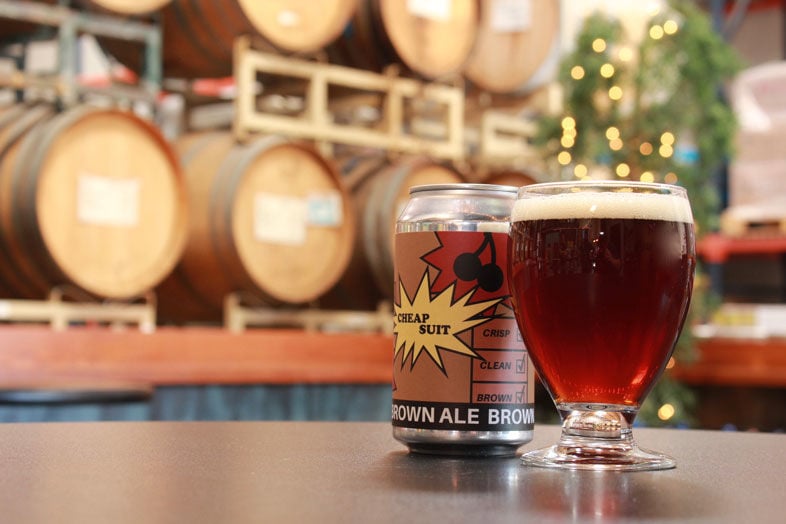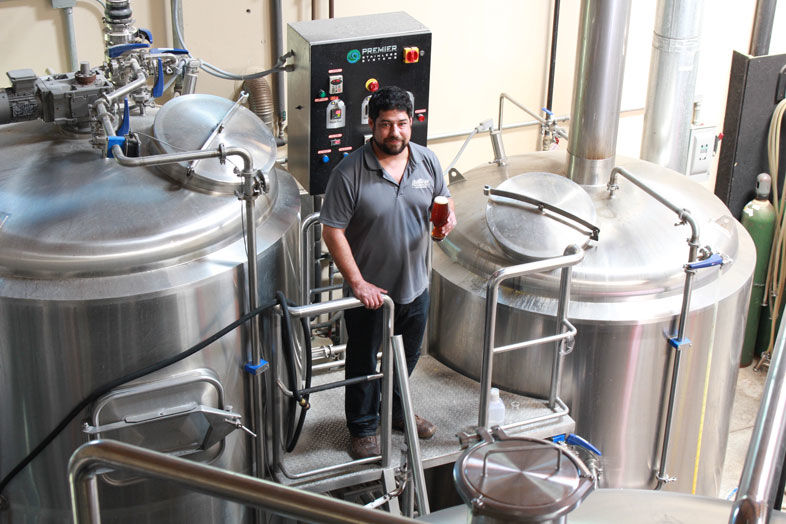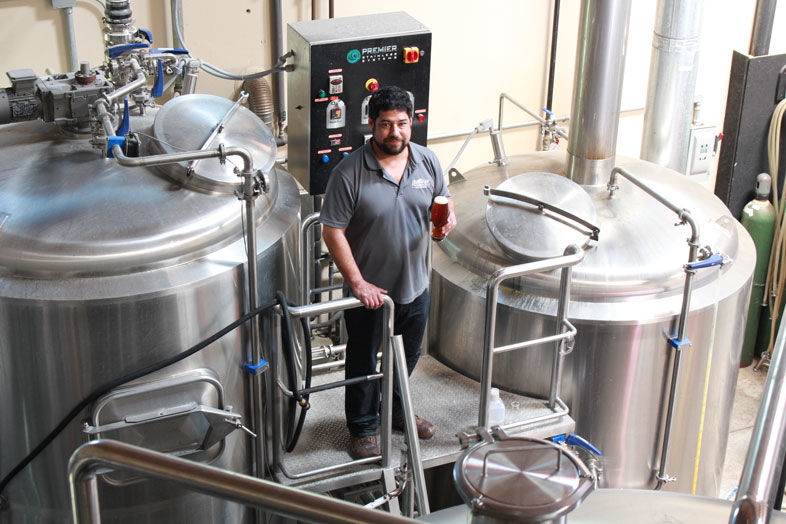Sometimes the intermittent poetry that punctuates your life seems to write itself. It wasn’t until I pulled into the parking lot of Iron Fist’s main production facility in Vista that I noticed the strangely beautiful scene around me. Thousands of just-emerged painted lady butterflies were swarming past, furiously making their way north toward their breeding grounds. At that moment, I couldn’t help but think to myself that there was a certain poetry in this. I was visiting to document a kind of emergence and migration as well. I was here to see how Iron Fist has transformed and reimagined itself from its early days to what it is today.
Iron Fist first opened in 2010, under the brewing leadership of 21-year-old Brandon Sieminski. The rest of the brewery was staffed mostly by Brandon’s family, who worked in administration, sales, marketing, and also ran the tasting room. The focus back then was mostly on Belgian-influenced beers of all styles and varieties, with a stout, an IPA, or a pale ale often added to the mix.
Today, under the direction of Brewmaster Tom Garcia (formerly of Offbeat Brewing), Iron Fist has a new identity and a new approach to building its portfolio. Tom is no stranger to the brewery; he had actually been involved in its pre-opening development, consulting with Brandon and the family on brewhouse functionality and process as well as recipes. When Tom’s previous brewery wound down two years ago, the team at Iron Fist asked him back for another consulting gig. Things seemed to work out on that project; Tom has been there ever since.
Sipping from a cold glass of the recently reformulated Nelson the Impaler IPA, I sat down with Tom to talk about how the management and focus of the brewery has changed, and what we can expect to see from Iron Fist in the months and years to come.
According to Tom, there were a number of “big picture” elements that needed to be reassessed when he became brewmaster. One of the immediate goals was to increase volume and distribution, but that couldn’t be done until the other production aspects were changed.
“Most of what I did when I first came on was look closely at the five core recipes,” Tom says. “For those, I didn’t touch any of the ingredients, didn’t change anything, I just looked at how we could get them to better go the last two to five miles of the marathon.” The marathon he refers to is the entire beer production process, from malting in the grain to packaging the finished beer. As he explains it, his focus was on the two key factors of consistency and presentability (clarity, color).

Iron Fist Has a New Hand on Deck
Malt-forward beers, like Cheap Suit Brown Ale, are playing a larger role in Iron Fist’s overall brewing strategy | Photo: Bruce Glassman
Consistency was “a paradigm shift for the brewery.” Most of Iron Fist’s previous production focused on bottle-conditioned beers, which are not consistent. (Of course, for those kinds of beers, consistency is by definition not the goal.) When you’re producing a six-pack to go to Ralph’s, however, you want that six-pack to be exactly the beer consumers are expecting every time they buy it.
Turbidity (clarity) was another issue that Tom addressed from the get-go. He put a number of new, more rigid quality control measures in place that yielded immediate results.
While he was “brightening up the beers,” he was also refocusing the lineup to be not so Belgian heavy. “We have two Belgians on the board right now, out of twelve beers,” he says. Instead, the tap list would include a good deal of the more malt-forward stuff, which not only addressed a need he identified by listening to customers, but renewed what had been a big strength and focus of Offbeat’s lineup back in the day. “We’ve moved to being very attuned to our audience and really listening. That’s a big deal for us,” says Tom. “We’re being guided by the comments and preferences of our customers, and we’re also taking the serious conversations to heart. Every time we change or adjust a recipe in reaction to our customers, we rethink how we brew and the ingredients we use. And that has started to become our signature.”
Under Tom’s direction, the brewery has added a variety of malt-centric, drinkable, midrange ABV beers, such as Cheap Suit Brown Ale, a red ale, a Winter Warmer, and Irish Fist, which is a highly flavorful dry Irish stout that clocks in at 6.5 percent. (Velvet Glove, the brewery’s previous flagship dark beer, is delicious and still in production, but it’s a hefty 9 percent.) In addition to the malt-forward stuff, there’s also plenty of hop-forward beer to choose from, including Summer City Lager, Renegade Blonde, Counter Strike IPA, and the top-selling Blood Orange Nelson IPA.
During the past three months or so, Tom feels that he’s been given the green light to start doing even more of his own unique recipe development, where he’s not under pressure to hew solely to the old formulations and brands. “I want to know how we can do something artfully and tastefully, but still be looking for trends that haven’t been started and needs that haven’t been met. We also want to do the styles that haven’t been overdone.”
Looking to the future, Tom hopes to use the new Iron Fist lineup to inspire craft fans to embrace all kinds of more malt-centric styles. “Traditionally, in order to be a beer drinker in San Diego, you had to be a hophead,” he says. “You had to love the 7 or 8 percent in-your-face beers. What I’m really happy and excited about is that we can finally tell people who like full-flavored, malt-forward, non-bitter beers that those beers are available to them from Iron Fist.”

Iron Fist Has a New Hand on Deck
PARTNER CONTENT
Brewmaster Tom Garcia has taken Iron Fist in a new direction since joining the team full time | Photo: Bruce Glassman
















